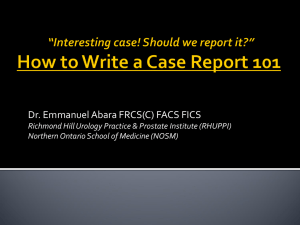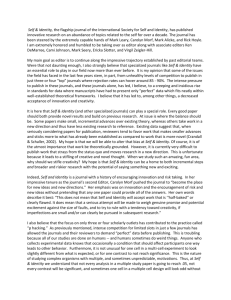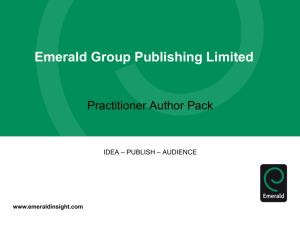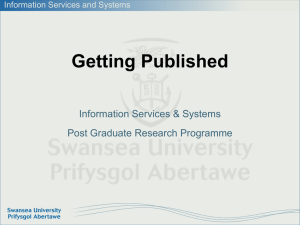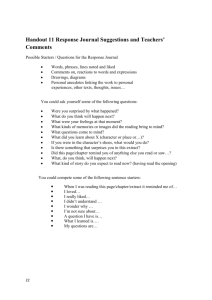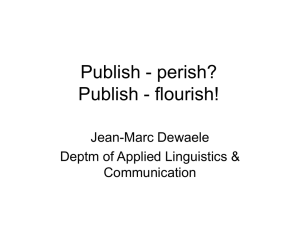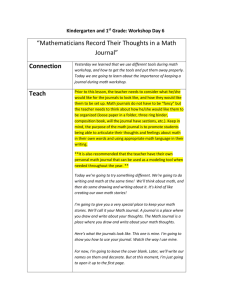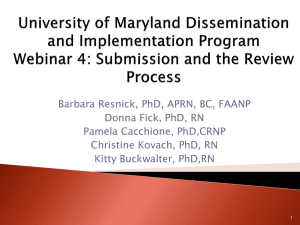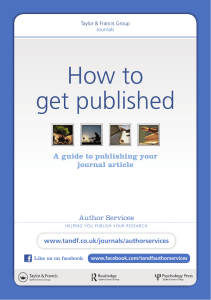How to publish your work in journals
advertisement
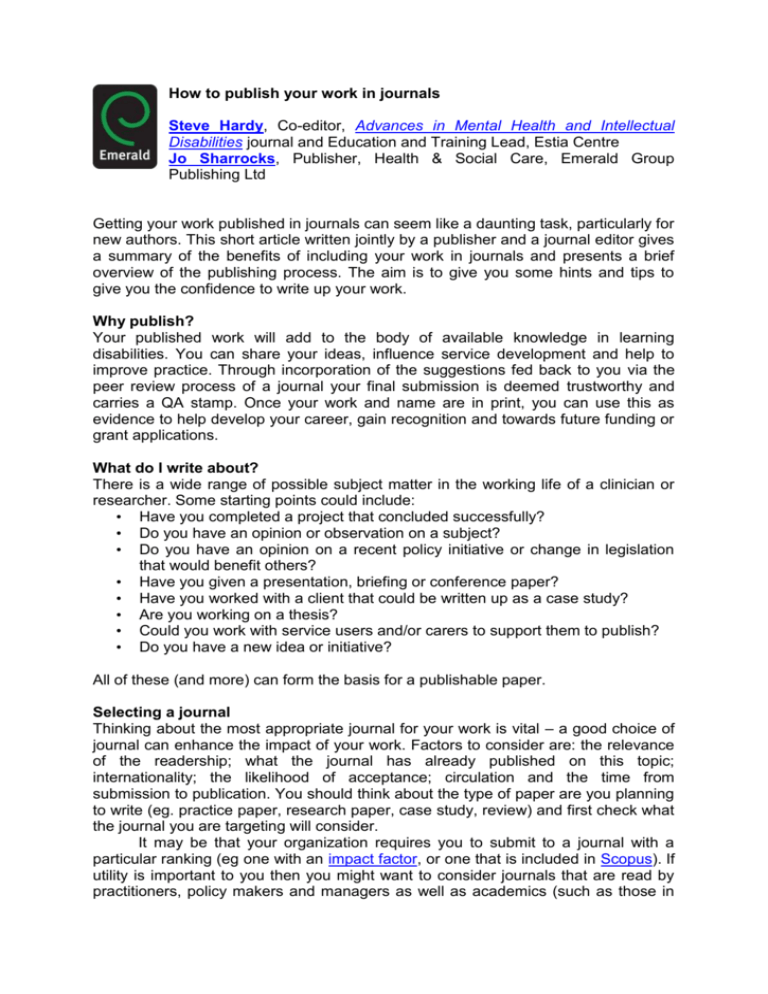
How to publish your work in journals Steve Hardy, Co-editor, Advances in Mental Health and Intellectual Disabilities journal and Education and Training Lead, Estia Centre Jo Sharrocks, Publisher, Health & Social Care, Emerald Group Publishing Ltd Getting your work published in journals can seem like a daunting task, particularly for new authors. This short article written jointly by a publisher and a journal editor gives a summary of the benefits of including your work in journals and presents a brief overview of the publishing process. The aim is to give you some hints and tips to give you the confidence to write up your work. Why publish? Your published work will add to the body of available knowledge in learning disabilities. You can share your ideas, influence service development and help to improve practice. Through incorporation of the suggestions fed back to you via the peer review process of a journal your final submission is deemed trustworthy and carries a QA stamp. Once your work and name are in print, you can use this as evidence to help develop your career, gain recognition and towards future funding or grant applications. What do I write about? There is a wide range of possible subject matter in the working life of a clinician or researcher. Some starting points could include: • Have you completed a project that concluded successfully? • Do you have an opinion or observation on a subject? • Do you have an opinion on a recent policy initiative or change in legislation that would benefit others? • Have you given a presentation, briefing or conference paper? • Have you worked with a client that could be written up as a case study? • Are you working on a thesis? • Could you work with service users and/or carers to support them to publish? • Do you have a new idea or initiative? All of these (and more) can form the basis for a publishable paper. Selecting a journal Thinking about the most appropriate journal for your work is vital – a good choice of journal can enhance the impact of your work. Factors to consider are: the relevance of the readership; what the journal has already published on this topic; internationality; the likelihood of acceptance; circulation and the time from submission to publication. You should think about the type of paper are you planning to write (eg. practice paper, research paper, case study, review) and first check what the journal you are targeting will consider. It may be that your organization requires you to submit to a journal with a particular ranking (eg one with an impact factor, or one that is included in Scopus). If utility is important to you then you might want to consider journals that are read by practitioners, policy makers and managers as well as academics (such as those in this area published by Emerald). Think about the political nature of your work – would a national journal be more appropriate than an international one? There may be different aspects to a single piece of work so think strategically and consider whether to submit different papers to more than one journal. With the principles of inclusion underpinning learning disability practice you may want to consider publishing in journals in other subject areas (eg to a general forensic journal rather than a learning disability specific title). Writing the paper It cannot be emphasised enough how important it is to look at and follow the author guidelines for the journal that you are submitting to. These are usually found on a journal’s website. Consider the scope of the journal, types of papers accepted, word length, referencing style, etc. If you are unsure of the suitability of your paper you can start by sending an outline or abstract to the editor and ask if it looks suitable (or how it could be made so). Try reading at least one issue of the journal to get a feel for its coverage and style. Doing all this research at the outset may seem timeconsuming but it will minimize the chances of you submitting an unsuitable paper and of it being rejected! Using the review process to improve your paper Most journals will operate a form of peer review, which will generally be ‘doubleblind’ (the reviewers won’t know who the authors of the paper are and visa versa). Reviews can be extremely helpful in improving your paper. On first sight receiving a review can be overwhelming and new authors can concentrate on the negative aspects, but you should think of these as recommendations to help improve your paper. Peer reviewers and the editor of a journal will all want to work with you to make your paper the best it can possibly be and you are all working towards the same goal – for the paper to be suitable for publication in an issue of the journal. We hope to have given you an overview of some considerations to make when submitting your paper for publication. Do not hesitate to get in contact with us if you’d like any further information on getting published or if you want to discuss an idea for a future paper. Journals you might consider making a submission to include: Advances in Mental Health and Intellectual Disabilities Tizard Learning Disability Review Journal of Intellectual Disabilities and Offending Behaviour The Journal of Adult Protection Social Care and Neurodisability These journals are included in Emerald's Health & Social Care Collection. Content delivers high-quality, up-to-date, peer-reviewed research and evidence-based practice with the overall aim of considering social impact and improving practice. The content of this article is based on Emerald’s Guide to Getting Published presentation.
